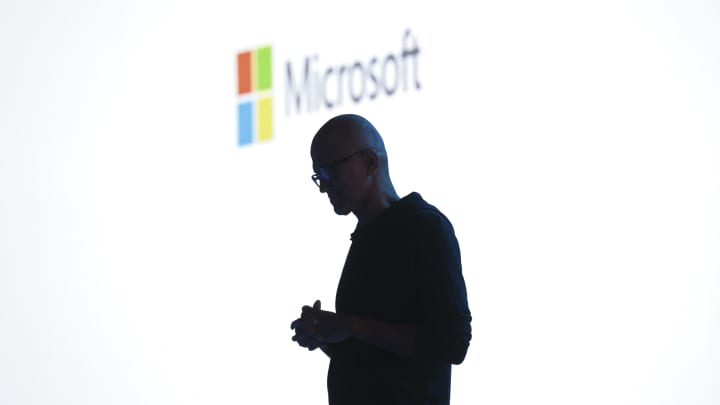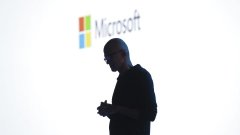
shares dipped on Wednesday as investors looked past better-than-expected earnings and revenue and focused instead on disappointing cloud results. But executives provided a dose of optimism when they predicted a cloud growth speed-up in the first half of 2025.
Here's how the company did in its report, posted after the bell on Tuesday, compared with the LSEG consensus:
Microsoft's revenue increased 15% year over year in the fiscal fourth quarter, which ended on June 30, according to a . Net income, at $22.04 billion, was up from $20.08 billion, or $2.69 per share, in the year-ago quarter.
With respect to guidance, Microsoft called for fiscal first-quarter revenue between $63.8 billion and $64.8 billion, implying 13.8% growth at the middle of the range. Analysts polled by LSEG were looking for $65.24 billion in revenue. The forecast included $15.25 billion in operating expenses at the middle of the range, under the StreetAccount consensus of $16.10 billion.
The company's top segment, Intelligent Cloud, generated $28.52 billion in revenue. It includes the Azure public cloud, Windows Server, Nuance and GitHub. The total was up about 19% and below the $28.68 billion consensus among analysts surveyed by StreetAccount. GitHub's revenue is now at an annual run rate exceeding $2 billion, Microsoft CEO Satya Nadella said on a conference call with analysts.
Revenue from Azure and other cloud services grew 29% during the quarter. Analysts polled by CNBC and StreetAccount had expected 31% growth. Microsoft's Azure number hadn't fallen short of consensus since 2022. The tech giant doesn't disclose revenue from the category in dollars.
Last week, Google parent said revenue from its cloud business, encompassing Workspace productivity software and Google Cloud Platform infrastructure, went up by about 29%.
Microsoft's cloud unit is of particular importance to Wall Street, as the company is battling with Web Services and Google for artificial intelligence workloads. All three companies are investing heavily to boost AI capabilities and to try and lure startups and big companies as generative AI models rapidly advance. For Amazon, AWS has been a critical source of profit for a decade.
Of the 29% growth for Azure and other cloud services, 8 percentage points came from AI services, Microsoft said.
"Our share gains accelerated this year driven by AI," Nadella said. But demand for Azure AI services remained higher than available capacity, said Amy Hood, Microsoft's finance chief. The company pointed to that trend . She said Azure growth in June was slightly lower than expected across some parts of Europe.
Microsoft sees fiscal first-quarter Azure revenue growth between 28% and 29% at constant currency in the fiscal second quarter, with faster growth in the second half of the fiscal year, Hood said. Analysts polled by StreetAccount were looking for fiscal second-quarter revenue growth of 30.6% for Azure.
The Productivity and Business Processes unit that includes Office software and LinkedIn produced $20.32 billion in revenue. That's up 11% and more than the $20.13 billion StreetAccount consensus.
Microsoft's More Personal Computing unit, with the Windows operating system, gaming, devices and search advertising, contributed $15.90 billion in revenue. That outcome is up 14% and higher than the StreetAccount consensus of $15.49 billion.
The results benefited from a solidifying PC market. Sales of Windows licenses to device makers were up 4%. Technology industry researcher Gartner estimated that PC shipments during the fiscal fourth quarter increased 1.9%, up from 0.9% growth in the prior quarter.
In gaming, Microsoft now has over 500 million monthly active users, including various consoles, PCs and mobile devices following the Activision Blizzard acquisition that in October, Nadella said.
During the fiscal fourth quarter, Microsoft started selling with AI features that can run certain models locally without the need for an internet connection. Dell, HP and other device makers also touted their own so-called Copilot+ PCs. said at a press briefing in May that "we're bringing real joy and a sense of wonder back to creation on the PC."
Excluding the after-hours move, Microsoft stock is up 12% year to date, while the S&P 500 gained 13% over the same period.
WATCH:




